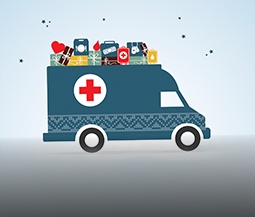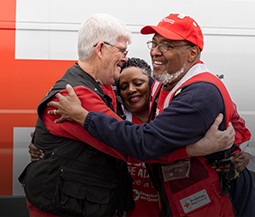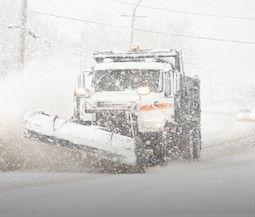Although smoke from the fires in Canada is getting most of the wildfire attention, there have already been numerous blazes burning here in the U.S. The American Red Cross urges people who live in fire-prone areas to make their preparations now as the climate crisis makes conditions ripe for a busy year.
The climate crisis is causing the perfect storm of conditions for fire weather — heat, drought and strong wind — and the time of year that these conditions are likely is increasing across the globe. Most U.S. wildfires occur between June and August, and the National Interagency Fire Center reports so far this year there have been more than 24,000 wildfires which have burned more than 667,000 acres. While recent storms improved some drought conditions across the country, some regions ─ parts of New Jersey, the Midwest, Pacific Northwest and Great Plains ─ saw the situation worsen.
WHAT YOU SHOULD DO NOW Red Cross disaster teams have already responded to wildfires in several states, including Arizona, New Mexico and Colorado, where fires forced people to leave their homes. Follow these steps to help make sure your family is prepared to either evacuate or shelter in place.
Create an evacuation plan. Plan what to do in case you are separated from your family during an emergency and if you have to evacuate. Coordinate your plan with your child’s school, your work and your community’s emergency plans. Plan multiple routes to local shelters, register family members with special medical needs as required and make plans for pets. If you already have an emergency plan, update and it and review with family members so everyone knows what to do if an emergency occurs.
Build an emergency kit with a gallon of water per person, per day, non-perishable food, a flashlight, battery-powered radio, first aid kit, medications, supplies for an infant and pets if applicable, a multi-purpose tool, personal hygiene items, copies of important papers, cell phone chargers, extra cash, blankets, maps of the area and emergency contact information. Because of the pandemic, include a mask for everyone in your household. If you already have a disaster kit, now is the time make sure the food and water is still okay to consume and that copies of important documents are up to date.
Download the free Red Cross First Aid app so you’ll know what to do if emergency help is delayed and the free Emergency app for weather alerts, open Red Cross shelter locations and safety steps for different emergencies. Choose whether you want to view the content in English or Spanish with an easy-to-find language selector. Find these and all of the Red Cross apps in smartphone app stores by searching for the American Red Cross or going to redcross.org/apps.
You can find more wildfire safety information here.
WILDFIRE PREVENTION Sadly, people cause 85% of wildfires by burning debris, using equipment improperly, discarding cigarettes carelessly, leaving campfires unattended or intentionally setting a fire. To help prevent wildfires, follow these critical tips:
Don’t drive your vehicle onto dry grass or brush. Hot components under your vehicle can spark fires.
Use equipment responsibly. Lawn mowers, chain saws, tractors and trimmers can all spark a wildfire.
Use caution any time you use fire. Dispose of charcoal briquettes and fireplace ashes properly, never leave any outdoor fire unattended, and make sure that outdoor fires are fully extinguished before leaving the area.
If residential debris burning is allowed — use caution. After obtaining any necessary permits, ensure that burning is not currently restricted in your area.
Store combustible or flammable materials in approved safety containers away from the house.












